#world seed
Text
I forgot the cover art!!
It's for the World Seed pdf that's not done yet 😅 but the design document is done and free if you want it

Kinda cute right? (*´ω`*)
It's the last link in here if you want the design document though!! I'll put the pdf on itch.io when it's done!!
#gaming#game design#game development#tabletop rpgs#indie vtuber#tabletop roleplaying#english vtuber#vtuber#tabletop games#ttrpg#world seed#indie game dev#indie game#mystydjinn
3 notes
·
View notes
Text
Try out this world seed in Minecraft: -1412053023
Set the world border to 500 and then go on your adventure! There’s a lot of interesting things to explore.
7 notes
·
View notes
Text
The back-into-it roundup, 11/2/23
There’s a wall that builds itself. It stands between me and my creative work. If I pass through it every day, I can knock it down a little with each trip—moving past it is never effortless, but the wall doesn’t have a chance to grow that much. If I don’t pass through for a while, the wall climbs and solidifies. Pushing past it gets harder the longer I wait.
I shared that image, that metaphor,…
View On WordPress
0 notes
Text
When I was making my first world, I noticed there was a world seed option. I used my birthdate, because why the heck not:
10131991
Just wanted to share it in case anyone was interested 🤷🏽♀️
0 notes
Text
Prompt 191
So. Apparently immortality does in fact exist. And is apparently very easily accidentally achieved, if the fact an entire city has it now.
The GIW will be waiting a very long time to be able to drop that ghost shield, because the city doesn’t seem to be dying out anytime soon. Or at all actually. It’s been several generations now.
They might need to request assistance. Maybe before others start to investigate now that vigilantes are becoming a semi-common thing.
#dcxdp#dpxdc#prompts#The ghost shield made it where the ecto wasn’t able to disperse as it came out of the portal & filled the city#Everyone became too ecto contaminated to be able to exit#And just… stopped being able to die permanently or by old age#They’re not exactly humans nor ghosts but something in-between#Aka Liminal as fuck#Technically everyone counts as a meta or alien#They sure aren’t human anymore & all remember the shit the GIW and government have pulled#They’ve opened up trading with the Realms a while ago#They give them living world things that help with obsessions & get seeds or whatever supplies in exchange#Along with training#They all give off necromancing fae vibes#Liminal Amity Park#Danny is Not ghost king
2K notes
·
View notes
Text
is herobrine behavior/lore not common knowledge anymore .... has the world really forgotten about the 2x2 tunnels .. trees with their leaves all gone ... the sand pyramids in the ocean ... the herobrine shrine that would apparently summon him ... the lost to time brocraft hoax livestream that further popularized herobrine as a concept (of which herobrine was just a painting from a texture pack, later removed to which the streamer would continue to act freaked out until the end) .. the original forum post from sometime in august 2010 that detailed encounters with a pseudo-player in the distance on a singleplayer world which included this screenshot
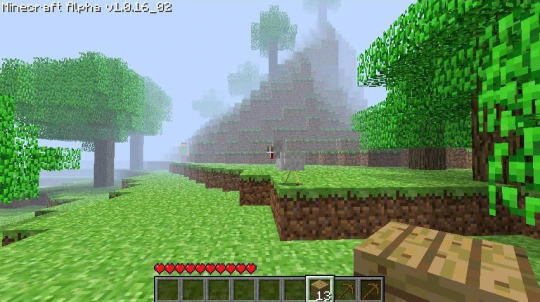
does anyone even care at all. about a herobrine so small
#minecraft#i cut the forum post contents short because i only enjoy it up to that point#such a fondness for the herobrine myth#it was simple but thats why it worked in the environment of alpha minecraft#minecraft - especially early versions - held with them a kind of inherit loneliness#it was a little barren. only a few mobs with very simple ai#limited amount of items. no hunger#the low render distance fog leading to somewhat of an eerie atmosphere. leaving you to wonder if theres anything else out there#the origins of this myth like. understood how to work with what this game was at the time to create a concept that you know. if you were a#young kid around this era then youd be wondering about herobrine in your own singleplayer world#s#hey remember when they forgot to add ''removed herobrine'' to the change logs#also remember when the community spent hours to find the seed from this screenshot and they actually did they found the herobrine seed
20K notes
·
View notes
Text
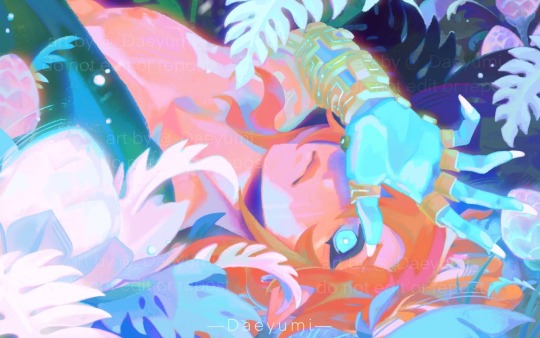
Penumbra 🌑🧿⚫️
#TotK#zelda#tears of the kingdom#zelda tears of the kingdom#Zelda TotK#link#zelda fanart#TotK fanart#tears of the kingdom fanart#daeyumi art#legend of zelda#TotK Link#brightbloom seeds#zonai#i’m really proud of this one actually#i love drawing link with glowing eye/s idk it’s a whole mood#i keep drawing him sad tho it breaks my heart he deserves the whole world 😭💔
2K notes
·
View notes
Text
im rereading the lightning thief and I forgot that the other campers were so freaked by Percy after he had been claimed + decimated those Ares kids that they wouldn't train with him anymore and he had to have solo sword lessons with Luke
#oh the fear the drama the tragedy of being a child of the big three#(I love it)#also not to think from the point of view of a villian#but Luke bestie baby this was prime manipulation time to try and convince percy to willingly side with kronos#and sew more seeds of doubt in percy's head#(I mean Luke clearly wanted him dead so that he would be the specialist boy)#but in a different world I guess where Luke was a little smarter as a villain#its interesting to think about
447 notes
·
View notes
Text
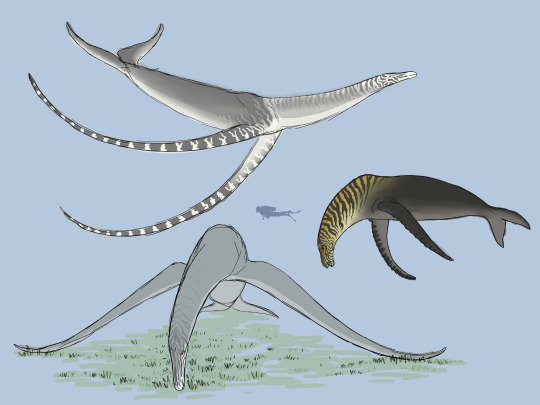
Some sketchy concept stuff that I'm posting because I liked it but couldn't be bothered to refine it into an actual artwork.
These submarine behemoths are the Mermares (Clade Euhippocampiformes), secondarily aquatic descendants of the domestic donkey. The group first appeared around 29 million years post-cataclysm, in the late Nerian stage of the Diluvian period. They evolved from an animal called the Seabra, a descendant of the Donkey which adapted to exploit a niche with, thus far, zero competition - that of a large marine herbivore.
On earth, marine ecosystems are notable for the distinct lack of vascular plant life, a condition caused by a number of factors - most notably the osmotic stress caused by the saltwater. Most photosynthesis is carried out by algae. On Spero, however, things are different. Because Spero's oceans were generated relatively recently, from extraterrestrial ice particles, there just hasn't been enough time for erosion and the water cycle to deposit dissolved minerals in the water. As a result, Spero's seas are made of freshwater - a much more tolerable condition for most plants, and thus the diversity of marine vascular plants is much, much higher than on earth. Also, due to the flatness of the flooded landscape and lack of any real tectonic features, enormous swathes of the seabed lie within the photic zone, less than 200 meters from the surface. Thus, endless expanses of marine grasslands - the "seagrass prairies" - extend from the shore, often for hundreds of miles before the water finally gets too deep for photosynthesis to occur.
All of this plant life is an extremely attractive prospect for herbivores, and it was likely what drew the ancestral Seabra to forage in shallow coastal meadows in the first place. But as the oceans got deeper and life adapted, the Seabra had to adapt in kind - their hind legs rotated backwards to act as a pair of propulsive flukes, their forelimbs developed into steering flippers, and their nostrils retreated to sit on their foreheads.
One notable feature of the Mermares is hyperphalangy, a condition where the fingers have too many bones. It's very common in large marine tetrapods in Earth's history - whales and dolphins, Ichthyosaurs, Plesiosaurs, and Mosasaurs all exhibited hypoerphalangy to some degree - and seems to be associated with the specialization of the limbs into flippers. We would expect to see similar patterns in marine lineages on Spero. What's unique about the Mermares, however, is the sheer number of extra phalanges in the finger; at least fifteen in the shorter-finned species, and more than thirty in the longest-finned forms. And because Mermares - being equids - only possess one digit per limb, the result is a single long chain of flat, squarish bones which, in some cases, can reach over forty feet long - the longest arms ever to exist.
These ridiculous appendages produce a lot of drag and are merely adequate for steering and stabilization. So why do the Mermares have them?
The answer is that they're weapons. And particularly devastating ones, at that.
Mermares use their flagellating flippers as bludgeons, against both predators and conspecifics. The flippers are connected to powerful neck muscles and can be swung forward with impressive force; combined with a well-timed twisting of the giant horse's torso, the huge flippers can impact hard enough to shatter bone and pulverize flesh. The flippers themselves do not escape unscathed, and older individuals often have scarred or mangled flipper-tips from numerous battles over the years; but it's a small price to pay for survival.
When not being used against their enemies, the flippers may be folded back against the sides of the animal to reduce drag, or used as props to keep the animal's belly up off the seabed when feeding. Mermares spend up to 18 hours per day grazing, using their long neck to crop aquatic grasses and other vegetation in a wide arc without moving their bodies and occasionally dipping up to the surface to breathe. Mermares are keystone species in the seagrass prairies; as hindgut fermenters, they are not as efficient at processing plant matter as ruminants like goats, and produce large amounts of nutrient-rich dung which acts as fertilizer for the meadows and helps keep the environment productive. The dung also acts as food for a variety of fish and invertebrates.
Let's look at some of the Mermare's diversity, shall we?
Drepanarion (center right)
One of the smaller Mermares, Drepanarion nonetheless grows to nearly 12 meters (39 feet) long. It is immediately recognizable by the bold black-and-yellow striping on the heads and necks of the stallions, and by the tall, narrow nuchal crest which extends from the withers and makes the stocky body look even more powerful. Unlike most other Mermares, which live in small groups of less than ten individuals, Drepanarion can be found in herds of over a hundred in the seagrass prairies of the Savanian (41 - 50 million years post-cataclysm). These nomadic throngs graze patches of seagrass nearly to the roots before moving on, giving the ecosystem time to regrow before returning in a few years' time. Drepanarion exhibits the most extreme sexual dimorphism of any Mermare, with stallions being both larger and more brightly coloured than mares; during the annual rut, males will fight each other in brutal bludgeoning matches to establish dominance and secure mates. To this end, they have some of the most extreme flipper anatomy of any Mermare; though not especially long (indeed, they have the shortest flippers of any derived genera), each phalanx bone has a protruding bony tubercle on the anterior edge which extends into a keratinous knob. These knobs both protect the flipper during combat and focus the force of the blow into a smaller area, dealing more damage.
Hipposeidon (bottom left)
First appearing in the early Imberian (50 million years post-cataclysm), Hipposeidon is the largest of all Mermares and, indeed, the largest animal ever to exist on Spero, with stallions regularly reaching over 24 meters (80 feet) long (mares are slightly smaller). Extremely large specimens may even reach 30 meters (100 feet), although this is rare. This ludicrous size - nearly rivaling even the mighty Blue Whale of Earth - is possible only due to the sheer abundance of its food. Hipposeidon appears at the height of the seagrass prairie's extent, and can pack away almost 900 kilograms (1900 pounds) of seagrass per day. This superlative food requirement has important consequences for Hipposeidon's behaviour; this animal is migratory. Seagrass prairies are extremely productive ecosystems, but nonetheless Spero is a seasonal world; as the summer growth gives way to the winter die-back, the greatest of the Mermares must migrate across the equator to seek out a continuous food source to fuel its immense bulk. In this way Hipposeidon experiences a perpetual summer, interrupted only by the biannual migration from north to south and back again. Female Hipposeidon are pregnant for about one year, timing the birth of the single large foal with arrival to the feeding grounds; the six-meter-long foal enjoys a long childhood nursing and playing in shallow summer waters, gathering strength before making the long swim across the barren tropical zone to pastures new.
Bathypegasus (top left)
The last and possibly the weirdest of the great Mermares, Bathypegasus is the only member of the clade which is not a grazer. Instead, it is a specialist feeder on pelagic, free-floating ferns. These ferns are a seasonal bounty, growing in huge numbers in the tropical summers of the late Imberian (60 million years post-cataclysm), where the planetary ring system shades out large portions of the planet for half the year. A close relative of Hipposeidon, Bathypegasus has left its ties to the seabed behind, becoming a fast, powerful swimmer which spends most of its life far above the sea floor. Its flippers have adapted to be even more ludicrously long - the longest forearms of any animal, ever, with each one measuring nearly 14 meters (45 feet) in length and each containing at least 35 individual bones. No longer used to prop the animal up off the seabed, these whiplike flippers are narrow and streamlined and can be whipped through the water at speeds of nearly 20 meters per second (that's over 40 mph) - the most extreme weaponry of any Mermare, and used to great effect against predators. Bathypegasus, like Hipposeidon, is migratory, following the blooms of pelagic ferns across Spero's oceans. Thanks to this midwater diet it is the only genus of Mermare to survive past the mid-Imberian extinction, when rising sea levels and steepening coastal slopes caused the seagrass prairies to disappear. Bathypegasus finally died out in the Ultimoxerian stage, around 75 million years post-cataclysm, the last and weirdest of the giant marine horses.
#spec bio#spec evo#speculative biology#speculative evolution#Vicis Aeternum#Spero#seed world#equid#donkey#they're like if a whale and a horse had a baby and that baby was somehow also a diplodocus
844 notes
·
View notes
Text
Bel'ameth, the Arms of the Goddess
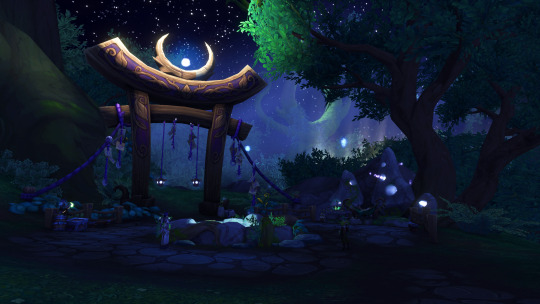


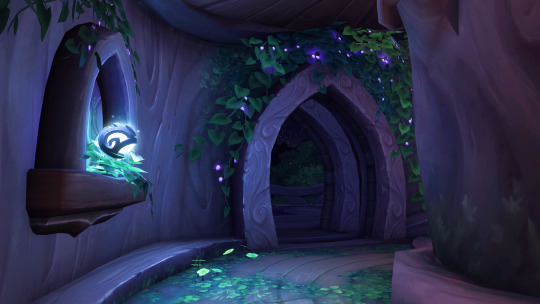


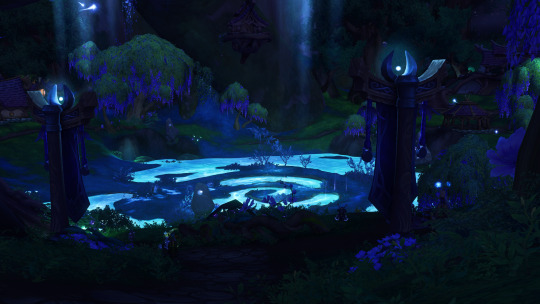


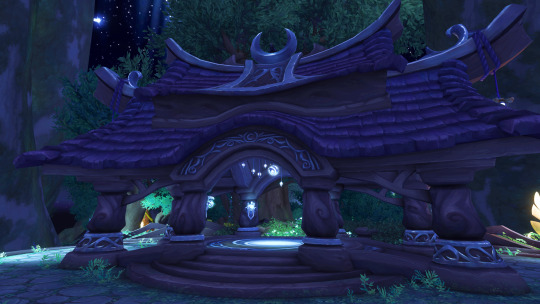

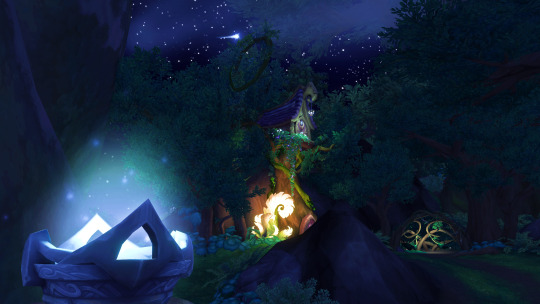
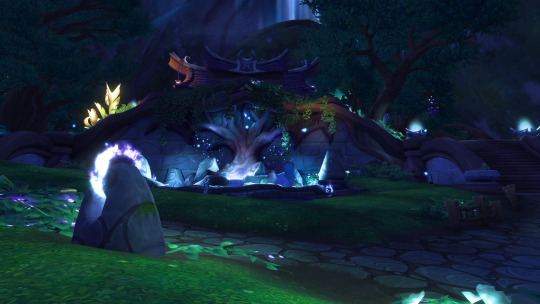

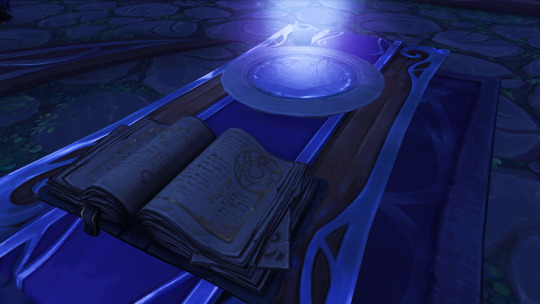
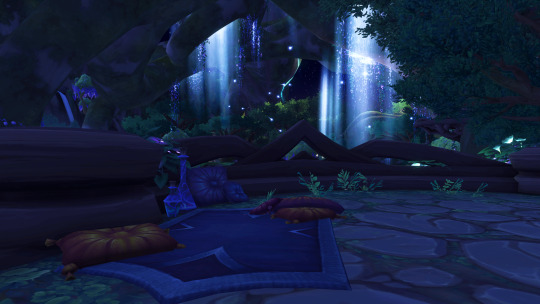
"Isil noras rae shala dielas." (Silver skies and safe journeys.)
#night elf#kaldorei#world of warcraft#wow#screenshot#screenshot dump#emerald dream#seeds of renewal#bel ameth#long post#amirdrassil
232 notes
·
View notes
Text
Time is an illusion, that helps us exist. That's why I have weird stream times, it's hard to keep up with this.
But I'll see you in a few minutes, I will promise this.
Cuz emerging from the void is always hard, past 10
https://twitch.tv/mystydjinn
The void really had a hold on me earlier, really smashed my guts around tbh. But I'm a lil better now, so we should be live in like... 30? I'll say something again then 🖤

#mystydjinn#gaming#vtuber#gaymer#indie vtuber#english vtuber#vtublr#vtuber uprising#vtubers on tumblr#vtubers on twitch#vtubers of tumblr#game development#moonlighter#pixel art#world seed#game design#tabletop rpgs#ttrpg#indie ttrpg
4 notes
·
View notes
Text
Mushroom mansion!

World seed: BaphometHATESsavanapineapples33
XYZ: 477.229 / 134.03165 / -620.680
World also features a shipwreck near a village beach
3 notes
·
View notes
Text
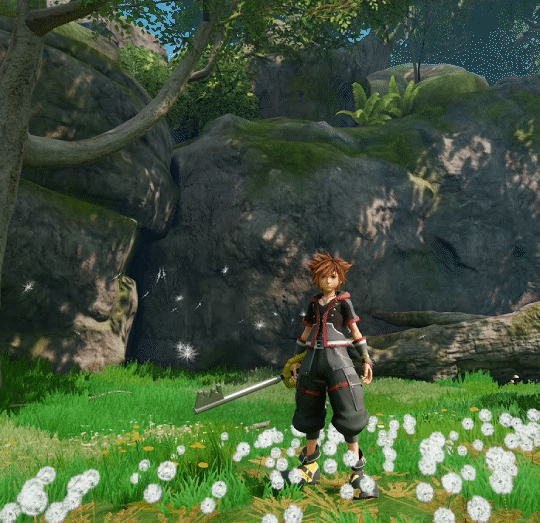
Kingdom Hearts 3 - Kingdom of Corona
#kingdom hearts 3#kh3#sora#kingdom of corona#scenery#my gif#i really like that this world lets you stop for a bit to appreciate the view around you#this is the spot where you can use areo magic to make the dandelion seeds fly for rapunzel#it's a nice moment
147 notes
·
View notes
Text


Made a pair of lil squid fellas to sit on my desk :)
I didn’t like any of the squid patterns I found on the internet so i ended up making my own, and after some trial and error I ended up with these little guys. They’ve both even got little beaks!
I’ve attached the pattern I made below if anyone wants it haha.
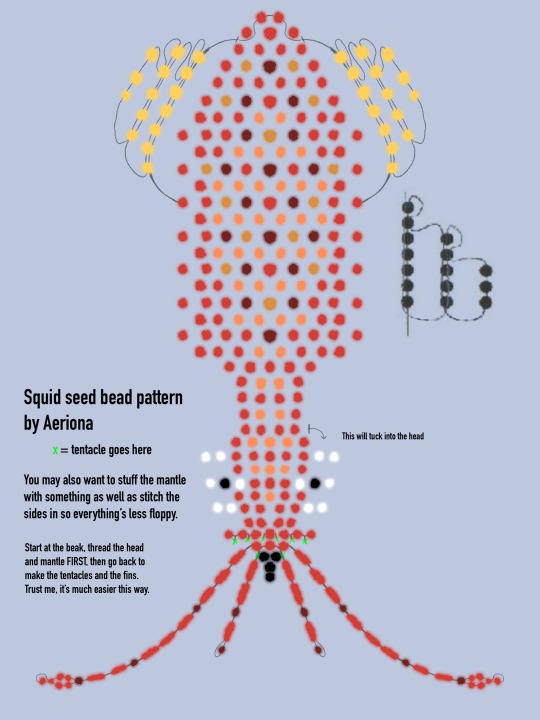
I used size 8 miyuki rocaille/round beads, some bugles and 0.28mm thread, but pretty much any size or shape should work. Hell, you could even use pony beads if you’re crazy enough.
If your thread’s long enough you can even do the whole thing in one go, I’d personally recommend that as it means you have less knots to tie up :).
#Surprise craft tutorial jumpscare#I love these little guys so much i had to share them with the world#My art#squid#beadwork#glass beads#seed beads#pattern#bead pattern#tutorial#crafts#craftblr
185 notes
·
View notes
Text






The Emerald Dream
The Emerald Dream is a vast and ever-shifting dimension of spirits and nature magic that defies mortal perceptions of reality. Time and distance hold no meaning in this intangible realm, and a day in the physical world feels like decades in the Dream.
#dragonflight#world of warcraft#warcraft#wowedit#gamingedit#wowlocations#zone edits have returned. nature is healing#probably bc of all those damn seeds we're planting
312 notes
·
View notes
Text
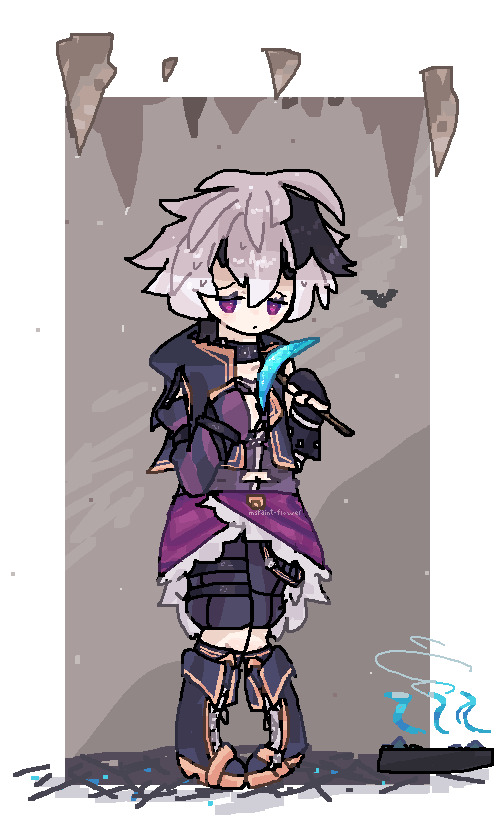
she got too deep in a cave
#vflower#v4 flower#v4flower#vocaloid#vocaloid flower#my art#ms paint#totally not based on my recent experiences in minecraft#my seed is actually so wacky there's deep dark everywhere#i don't know much about mc and it's my first world#so that was insane to find out HKJDSHGJKHEG#someone help her
208 notes
·
View notes